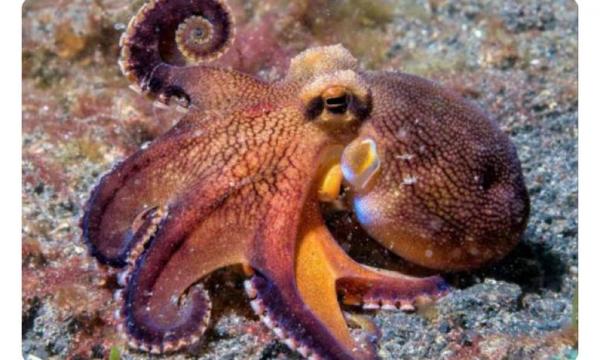WASHINGTON, iNews Ponorogo – Not many know that animal Soft-bodied cephalopods, such as squid, octopuses and cuttlefish, have the largest brain of all invertebrates (spineless animals). Where those two-thirds of the computing network in the center of his brain for view.
This marine creature has excellent eyesight, even in the dark. The skin of the octopus contains the same pigment proteins as its eyes, allowing its dermis to “see” the details of its surroundings and to camouflage them.
Researchers at the University of Oregon have conducted the first study to comprehensively map an octopus’s visual system. An analysis of more than 26,000 is required selwhich were collected during the dissection of two juvenile California double-headed octopuses (Octopus bimaculoides).
When the researchers sequenced cephalopod cells, they found four main populations, each of which releases different chemical signals. Some release dopamine, some release acetylcholine, some release glutamine, and some signal with both dopamine and glutamine.
These neurotransmitters are also present in vertebrate brains, such as ours, but there are smaller clusters of neurons in cephalopod brains that express unique chemicals.
For example, a ring of cells around the optic lobe has been found to produce octopamine, a neurotransmitter closely related to a hormone in our bodies called norepinephrine.
Similar to vertebrates, the octopus’s visual system is layered, but not in the same way as humans. The diversity of cell types and how they are organized in cephalopod brains is fundamentally different.
“At a clear level, neurons don’t map to each other, they use different neurotransmitters. But maybe they do the same calculations, just differently,” explained University of Oregon biologist Cris Niell quoted by SINDOnews from the sciencealert page.
One of the biggest questions is how the octopus (cephalopod) visual system developed. Octopuses spent years developing large brains, but how does information from the retina help direct that growth?
In vertebrates, photoreceptors in the retina are not directly connected to the brain. Instead, octopuses pass messages to other neurons. But in octopuses (cephalopods), photoreceptors are connected directly to the optic lobes of the brain.
‘The atlas we present here provides a roadmap for such studies and, more broadly, provides an avenue for solving the functional logic, development and evolution of the cephalopod visual system,’ wrote the researchers from the University of Oregon.
This article was published on SINDOnews with the title: Incredible Octopus vision system, made up of 26,000 cells in the brain
Publisher: Dinar Putra


